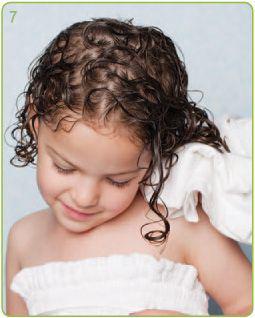B003YL4KS0 EBOK (29 page)
Authors: Lorraine Massey,Michele Bender

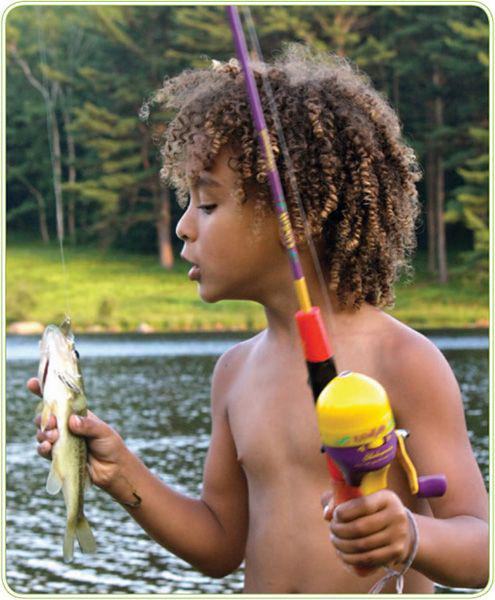
Children don’t come with instructions and neither does their hair. But if you’ve got a curly kid, knowing how to care for his or her hair can make life for you and your child a lot easier. My clients frequently tell me that they hated their curls from a very young age and that much of their childhood angst stemmed from their strands. Many curly girls and boys recount the physical
and
emotional pain of having mothers who didn’t know how to handle their curls. They would straighten, braid, or brush their child’s hair, trying to untangle what they saw as knots, or in total frustration, they’d cut it off completely. Early in life, these curly kids got the message that their hair was not acceptable—that it was something to control and hide, not embrace and love.
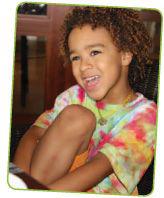
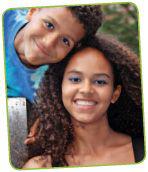
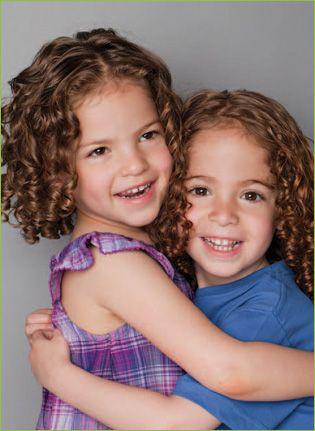
Thankfully, the curly life doesn’t have to be that way for curly kids anymore. Just as we want our children to grow up feeling good about themselves, we also want them to grow up feeling good about their hair. Those swirling strands affect our children’s self-esteem on a daily basis. Honor and care for your child’s curls and you will teach him or her to do the same.
Of course, if you’re the parent of curly haired kids, as I am, or if you’ve been one yourself, you know that underage curls can get into more messes than a two year old with a bucket of goo. Kids are constantly running, tumbling, swinging, and jumping into mud puddles and piles of leaves. They throw sand at each other. They have food fights. They put on dress-up costumes, winter caps, bathing caps, and baseball hats, and never worry about whether their curls get matted or snarled. That is until it comes time to wash those curls, and then oceans of tears get washed down the drain along with the sand and dirt.
I recommend treating kids’ curly hair the same way I treat adults’ hair: with no shampoo, no brushes, and loads of conditioner. Surprisingly, even baby shampoos can contain harsh detergents, ingredients that aren’t good for your child’s delicate hair and scalp. And shampoos that promise to be “tear-free” can make you weep, since any foreign matter can make your eyes water. Plus, all that lathering up doesn’t clean but ruffles the hair cuticle, which leads to more snarls. Instead, look for a sulfate-free cleanser or, if you can’t find one, a botanical conditioner to cleanse with. (See
page 77
for information on finding the right products.) Then, follow the steps below to cleanse your child’s hair. Explain what you’re doing, so kids’ll know what to do when they start taking care of their own hair.
1
Have your child sit in the tub and tell him or her to look up at the ceiling. Use a plastic jug to gently and evenly pour water through the hair, wetting it thoroughly.
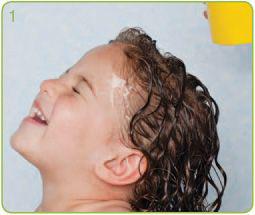
2
Cup one hand and apply a sulfate-free cleanser or botanical conditioner along the pads of your fingers. (If your child has baby-fine hair, perhaps as little as ¼ teaspoon.) Evenly distribute the cleanser to the fingertips of your other hand. Then use firm, circular motions of your fingertips to massage your child’s scalp. The cleanser combined with the stimulation from your fingers will emulsify and break down dirt particles and deodorize the scalp. It will also soften the hair and leave it knot free.
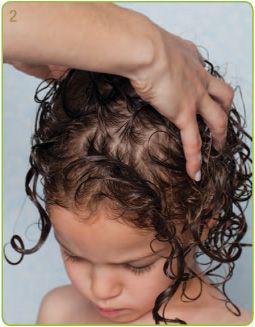
3
Again, ask your child to look up at the ceiling, and use a jug to pour water through the hair to rinse it thoroughly. If possible, cup the hair in your hands, allowing the water to flow through them like a sieve, which helps protect the curl formation.
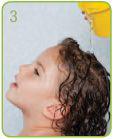
4
Put a shallow palmful of botanical conditioner in your hand, rub your hands together, and evenly smooth the conditioner on the canopy of your child’s hair as though you are icing a cake. (The amount will vary. Older girls with long, thick curls will need more conditioner than a younger child with short, fine hair.) Gently use your fingers to work the conditioner through the wet hair, beginning at the ends and making your way up to separate tangles.
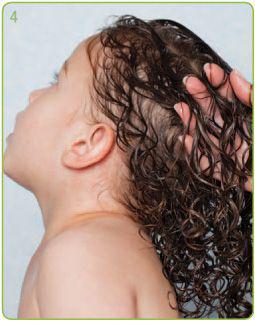
5
Apply an additional dollop of conditioner, about the size of a nickel, under the hair at the nape of the neck, the spot most prone to tangles and knots. That hair breaks easily, so be gentle when trying to release any tangles or knots. The hair should now feel smooth and silky—almost like wet seaweed.
6
Rinse the hair lightly so you leave some conditioner behind. You can do this by cupping your hands under the bath’s running water and just splashing water over the canopy of the hair. Then use your hands to lightly squeeze the hair upward toward the roots to remove excess conditioner. (If your child’s hair has a high frizz factor, don’t rinse after conditioning.)
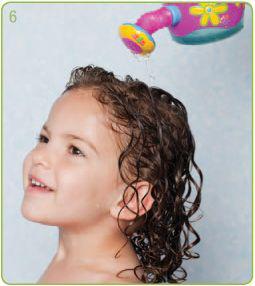
7
Once your little one is out of the bath, ask her to tilt her head upside down. Cup the hair with a microfiber towel, paper towel, or old cotton T-shirt, and scrunch-squeeze the hair upward toward the roots. This removes a little bit more conditioner but allows the hair to retain what it needs.
